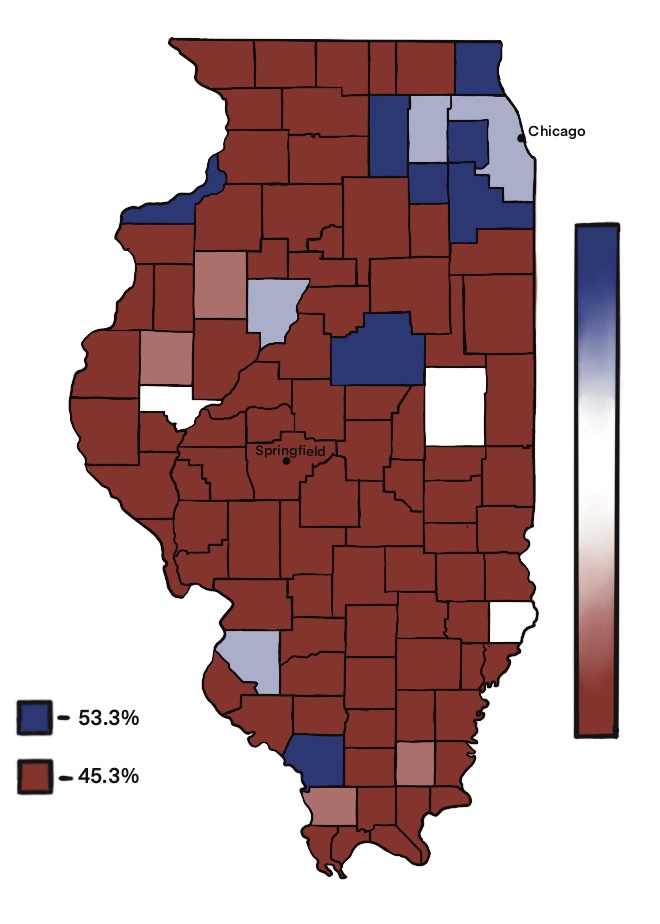Time for expert advice on Thompson Woods
April 5, 2014
The following is a guest column written by SIU Professor of Plant Biology Daniel L. Nickrent…
Having been a professor of plant biology at SIU since 1990 and an undergraduate here in the 1970s, I feel I have the credentials and institutional knowledge to weigh in on a topic that has resurfaced: the management of Thompson Woods.
The latest iteration is the proposal to the SIU Board of Trustees by the Graduate and Professional Student Council that the woods be designated an outdoor teaching laboratory and that its management be guided by a campus committee. It is clear that Thompson Woods has existed in various different ecological states from 1886 when Theodore Thompson purchased the land, to 1940 when Lavinia Rendleman Thompson sold the property to SIU, to the present. Some history about Thompson Woods can be found in an article by N. W. Hosley (Southern Alumnus, November, 1965) and a later one by J. O’Malley (SIU Alumnus, Spring 1993). The latter describes the efforts of two plant biology graduate students who proposed a management plan to the Campus Natural Areas Committee. This plan was never adopted, apparently owing to budgetary constraints and two natural disasters, one in 1980 and the other in 2009. These concerns, combined with the cleanup efforts after the 1980 and 2009 storms, have significantly altered the species composition of Thompson Woods.
Advertisement
The question “What do we want Thompson Woods to be?” was left unanswered in 1965, 1993 and today. Everyone has a different opinion ranging from “leave it alone” to “convert it to a park with trees and grassy lawns.” And of course, I have my view, which falls somewhere in the middle.
In the April 1 Southern Illinoisan article on Thompson Woods by Pete Spitler, Chancellor Rita Cheng was quoted as saying “It’s more like Central Park than the Shawnee National Forest.” My first reaction to this was negative. However, upon reflection, I admit I would like to see the woods be managed like a portion of Central Park – The Ramble. This 38-acre section is a naturalistic landscape that contains native plants and attracts more than 200 species of birds. Like the Ramble, Thompson Woods is surrounded by buildings and clearly requires continuous management. To maximize diversity, aesthetics and utility, I would propose Thompson Woods become a diverse forest free of exotic invasives. To accomplish this, the SIU Administration could benefit from the advice and guidance of folks such as myself (and others in the College of Science) to help understand what types of plants are present (and could be present) in Thompson Woods. Cheng revealed her misunderstanding when she erroneously referred to poison ivy (Toxicodendron radicans), ragweed (Ambrosia trifida) and pokeweed (Phytolacca americana) as invasive species when in fact all three are native species. Whether their presence in Thompson Woods is desirable is a management issue best decided by experts.
Chancellor Cheng also needs guidance to understand the processes that take place in natural systems, particularly with disturbance. The massive clearing of the underbrush and mowing has started a process known as secondary succession. Given time, species such as ragweed and pokeweed disappear and are replaced by woody species already present in the seed bank. This process should be highlighted (with interpretive signs) and used to teach students about an important ecological process. In my ideal world, workers with careful supervision would continue to improve Thompson Woods by removing exotics and introducing many different native plants. With this increased botanical diversity, many of the animals that have been lost would return. This diverse tract would be a wonderful and unique aspect of this campus that both highlights natural ecosystems of southern Illinois as well as providing a feature useful in recruiting new students.
As I see it, Thompson Woods sits in the middle of a major state university whose mission is to educate students from the state and around the world. For this reason, the proposal by the GPSC to designate this area a teaching laboratory holds much appeal to me (and many others with whom I have spoken). I would like to see a diverse composition for the management committee that includes people from various colleges as well as staff and administration personnel. The management document this committee produces should take “the long view” because proper decisions cannot be on the timescale of fiscal years or particular administrator terms, but on an ecological timescale. I can envision a plan that would actually save the university money instead of devoting expenditures to continual mowing and planting expensive (and in some cases invasive) ornamentals.
I like to think of Thompson Woods as a diamond in the rough. One could chip and grind away at it, eventually reducing it to a pile of useless abrasive powder. Or one could carefully examine its facets, make appropriate cuts, polish it and end up with a priceless jewel.
Advertisement








